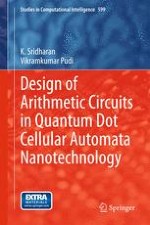
2015 | OriginalPaper | Buchkapitel
1. Introduction
verfasst von : K. Sridharan, Vikramkumar Pudi
Erschienen in: Design of Arithmetic Circuits in Quantum Dot Cellular Automata Nanotechnology
Aktivieren Sie unsere intelligente Suche, um passende Fachinhalte oder Patente zu finden.
Wählen Sie Textabschnitte aus um mit Künstlicher Intelligenz passenden Patente zu finden. powered by
Markieren Sie Textabschnitte, um KI-gestützt weitere passende Inhalte zu finden. powered by